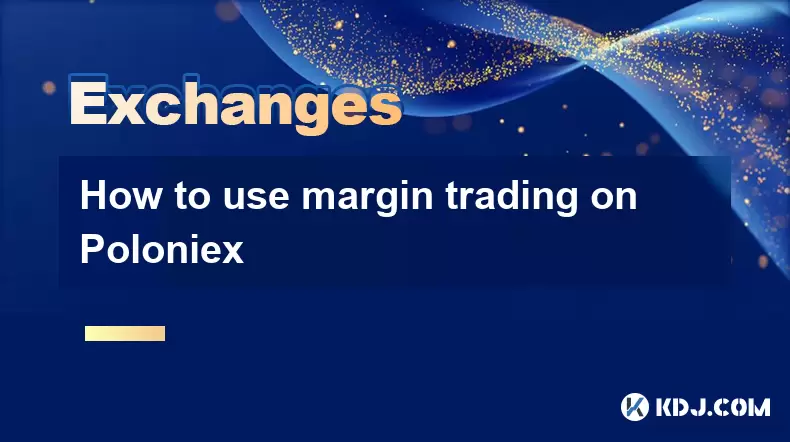-
 Bitcoin
Bitcoin $119900
0.94% -
 Ethereum
Ethereum $4633
9.35% -
 XRP
XRP $3.254
3.60% -
 Tether USDt
Tether USDt $0.9998
-0.04% -
 BNB
BNB $837.0
3.48% -
 Solana
Solana $194.3
10.87% -
 USDC
USDC $0.9998
-0.02% -
 Dogecoin
Dogecoin $0.2370
5.91% -
 TRON
TRON $0.3528
1.79% -
 Cardano
Cardano $0.8460
9.05% -
 Chainlink
Chainlink $23.61
12.06% -
 Hyperliquid
Hyperliquid $44.91
3.99% -
 Stellar
Stellar $0.4475
2.93% -
 Sui
Sui $3.899
5.78% -
 Bitcoin Cash
Bitcoin Cash $620.7
6.74% -
 Hedera
Hedera $0.2602
4.59% -
 Ethena USDe
Ethena USDe $1.000
-0.03% -
 Avalanche
Avalanche $24.84
8.52% -
 Litecoin
Litecoin $131.0
9.17% -
 Toncoin
Toncoin $3.509
3.47% -
 UNUS SED LEO
UNUS SED LEO $9.170
2.15% -
 Shiba Inu
Shiba Inu $0.00001360
4.82% -
 Uniswap
Uniswap $11.66
5.28% -
 Polkadot
Polkadot $4.180
7.93% -
 Ethena
Ethena $0.8242
2.31% -
 Dai
Dai $0.9998
-0.04% -
 Cronos
Cronos $0.1630
-3.04% -
 Pepe
Pepe $0.00001224
9.07% -
 Bitget Token
Bitget Token $4.464
1.16% -
 Aave
Aave $321.9
9.17%
What is the difference between Bybit's USDT contract and coin-based contract?
Bybit offers USDT-margined and coin-margined contracts; USDT uses stablecoin collateral, while coin uses the crypto itself, affecting risk and profit calculations.
Mar 28, 2025 at 10:14 am

Understanding Bybit's USDT and Coin-Based Contracts
Bybit offers two primary types of perpetual contracts: USDT-margined and coin-margined. Understanding their differences is crucial for informed trading decisions. The core distinction lies in how the contract is collateralized and the implications this has for risk management and potential profit/loss calculations.
The USDT-margined contract uses Tether (USDT) as collateral. This means you use USDT to open and maintain your position. Profit and loss are calculated and settled in USDT. This simplifies accounting, as all your trades are denominated in a single stablecoin. It's generally easier for beginners to understand and manage.
In contrast, a coin-margined contract uses the underlying cryptocurrency itself as collateral. For example, a Bitcoin (BTC) coin-margined contract requires you to deposit BTC to open a position. Profits and losses are then calculated and settled in the underlying cryptocurrency. This approach can offer potential benefits related to exposure to price movements of the underlying asset, but it also introduces additional complexities.
Collateral and Margin Requirements
A key difference lies in the collateral required. For USDT-margined contracts, you deposit USDT, a stablecoin pegged to the US dollar. This offers relative price stability compared to the volatile underlying asset. The margin requirements are usually expressed as a percentage of the contract value in USDT.
Coin-margined contracts, however, require you to deposit the underlying cryptocurrency. This means if you're trading Bitcoin contracts, you'll need to deposit Bitcoin. The margin requirements are expressed as a percentage of the contract value in the underlying cryptocurrency. Fluctuations in the price of the underlying asset directly impact your margin and the risk of liquidation.
Profit and Loss Calculations
Profit and loss calculations differ subtly. In USDT-margined contracts, your P&L is calculated and settled in USDT. This simplifies the accounting process and makes it easier to track your overall trading performance in a stable currency.
With coin-margined contracts, your P&L is calculated and settled in the underlying cryptocurrency. This means your profits and losses are directly affected by the price volatility of the asset. A significant price increase in the underlying asset can amplify your profits (or losses) compared to a USDT-margined contract.
Risk Management and Liquidation
Risk management strategies vary between the two contract types. With USDT-margined contracts, liquidation risk is primarily determined by the USDT value of your position relative to your margin. The relative stability of USDT simplifies risk assessment.
Coin-margined contracts introduce an additional layer of complexity. Liquidation risk is affected not only by the margin level but also by the price volatility of the underlying cryptocurrency. A sharp price drop can trigger liquidation even if your margin percentage seems healthy.
Funding Rates
Both contract types have funding rates, a mechanism to align the price of the perpetual contract with the spot price of the underlying asset. However, the funding rate is expressed differently. For USDT-margined contracts, the funding rate is usually quoted in USDT.
In coin-margined contracts, the funding rate is typically expressed in the underlying cryptocurrency. This means the funding payment you receive or pay will be in the same cryptocurrency as your collateral. This adds another layer to consider when managing your position.
Trading Strategies and Suitability
The choice between USDT-margined and coin-margined contracts depends on your trading strategy and risk tolerance. USDT-margined contracts are generally considered more suitable for beginners due to their simplicity and reduced exposure to cryptocurrency price volatility. They are ideal for traders who want to focus on leverage and price movements without the added complexity of managing the underlying asset's price fluctuations.
Coin-margined contracts, on the other hand, are often preferred by experienced traders who want to maximize potential profits by directly leveraging the underlying asset's price movements. They require a deeper understanding of market dynamics and risk management.
Step-by-Step Guide: Opening a Position
Here's a simplified step-by-step guide for opening a position on Bybit, regardless of contract type:
- Step 1: Log in to your Bybit account.
- Step 2: Navigate to the "Derivatives" section.
- Step 3: Select either "USDT Perpetual" or "Coin Perpetual" based on your preference.
- Step 4: Choose the trading pair (e.g., BTCUSDT or BTCUSD).
- Step 5: Specify your order type (limit, market, etc.).
- Step 6: Enter the contract size and leverage.
- Step 7: Place your order.
Frequently Asked Questions
Q: Which contract type is better for beginners?
A: USDT-margined contracts are generally recommended for beginners due to their simplicity and reduced exposure to cryptocurrency price volatility.
Q: What is the risk of liquidation with each contract type?
A: Liquidation risk is higher with coin-margined contracts because the value of your collateral (the underlying cryptocurrency) can fluctuate significantly, potentially leading to margin calls even with a seemingly healthy margin percentage.
Q: How are funding rates calculated and paid?
A: Funding rates are calculated based on the difference between the perpetual contract price and the spot price of the underlying asset. They are paid or received periodically based on your position and the prevailing funding rate. The payment is in USDT for USDT-margined contracts and in the underlying cryptocurrency for coin-margined contracts.
Q: Can I switch between USDT-margined and coin-margined contracts?
A: Yes, you can switch between contract types, but you'll need to close your existing positions before opening new ones in a different contract type. You'll also need to ensure you have sufficient funds in the required collateral currency.
Q: What are the advantages of using coin-margined contracts?
A: Coin-margined contracts offer the potential for higher returns due to direct exposure to the price movements of the underlying cryptocurrency. They are suitable for experienced traders who understand the associated risks and complexities.
Disclaimer:info@kdj.com
The information provided is not trading advice. kdj.com does not assume any responsibility for any investments made based on the information provided in this article. Cryptocurrencies are highly volatile and it is highly recommended that you invest with caution after thorough research!
If you believe that the content used on this website infringes your copyright, please contact us immediately (info@kdj.com) and we will delete it promptly.
- Unich's OTC Exchange: Surging with $1.2B Volume – What's the Hype?
- 2025-08-13 02:50:11
- MoonBull's Explosive Moves: Your Crypto Whitelist Ticket to Ride!
- 2025-08-13 02:30:11
- MAGACOIN Finance: Don't Miss the Presale Bonus!
- 2025-08-13 02:30:11
- Trump's Crypto Kingdom: $2.4 Billion and Counting
- 2025-08-13 02:50:11
- Solana, LSTs, and SEC Approval: A New Dawn for Crypto?
- 2025-08-13 02:55:12
- Bitcoin's Profit Surge: Unpacking the BTC Value Boom
- 2025-08-13 02:55:12
Related knowledge

How to use margin trading on Poloniex
Aug 08,2025 at 09:50am
Understanding Margin Trading on Poloniex

How to read the order book on KuCoin
Aug 10,2025 at 03:21pm
Understanding the Order Book Interface on KuCoinWhen accessing the order book on KuCoin, users are presented with a real-time display of buy and sell ...

How to read the order book on KuCoin
Aug 12,2025 at 02:28am
Understanding the Basics of Staking in CryptocurrencyStaking is a fundamental concept in the world of blockchain and cryptocurrencies, particularly wi...

How to set price alerts on Kraken
Aug 11,2025 at 08:49pm
Understanding Price Alerts on KrakenPrice alerts on Kraken are tools that allow traders to monitor specific cryptocurrency pairs for price movements. ...

How to earn cashback rewards on Crypto.com
Aug 12,2025 at 02:08am
Understanding Cashback Rewards on Crypto.comCashback rewards on Crypto.com are a feature designed to incentivize users to spend using their Crypto.com...

How to use advanced trading on Gemini
Aug 08,2025 at 04:07am
Understanding Advanced Trading on GeminiAdvanced trading on Gemini refers to a suite of tools and order types designed for experienced traders who wan...

How to use margin trading on Poloniex
Aug 08,2025 at 09:50am
Understanding Margin Trading on Poloniex

How to read the order book on KuCoin
Aug 10,2025 at 03:21pm
Understanding the Order Book Interface on KuCoinWhen accessing the order book on KuCoin, users are presented with a real-time display of buy and sell ...

How to read the order book on KuCoin
Aug 12,2025 at 02:28am
Understanding the Basics of Staking in CryptocurrencyStaking is a fundamental concept in the world of blockchain and cryptocurrencies, particularly wi...

How to set price alerts on Kraken
Aug 11,2025 at 08:49pm
Understanding Price Alerts on KrakenPrice alerts on Kraken are tools that allow traders to monitor specific cryptocurrency pairs for price movements. ...

How to earn cashback rewards on Crypto.com
Aug 12,2025 at 02:08am
Understanding Cashback Rewards on Crypto.comCashback rewards on Crypto.com are a feature designed to incentivize users to spend using their Crypto.com...

How to use advanced trading on Gemini
Aug 08,2025 at 04:07am
Understanding Advanced Trading on GeminiAdvanced trading on Gemini refers to a suite of tools and order types designed for experienced traders who wan...
See all articles

























































































